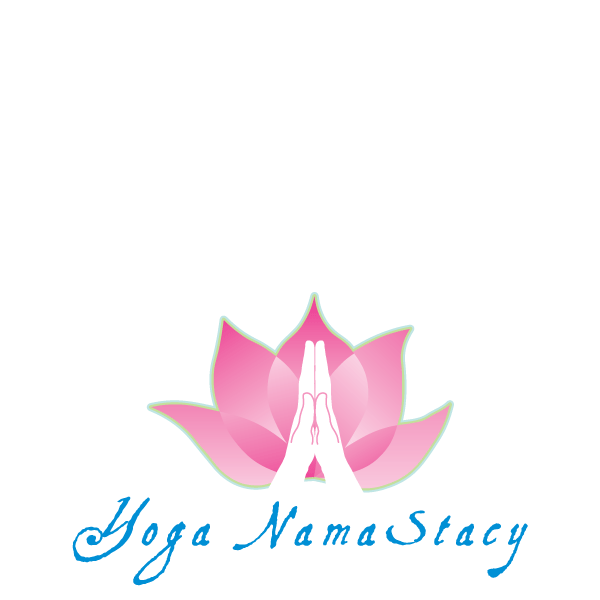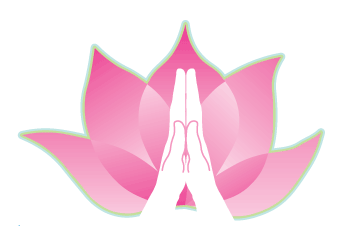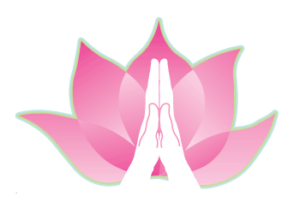
Do The Twist!
Bharavadjasana – Simple to Complex
Just as important as backbending and forward folding, twisting is an integral part of a balanced yoga practice. A well balanced practice will take the body in all directions available, so that you end feeling balanced and whole.
For some, however, twisting brings up many concerns. If shoulders, low back, or hips are tight, it’s likely a challenge to twist in a way that feels good. And if you’ve ever had a neck or back injury, twisting may down right scare you…
But! The good news is this: Twisting is accessible for almost everyone!
You don’t need to go into the deepest expression of a pose to reap the rewards. With the use of simple modifications, props and good instruction, you’ll be doing the twist in no time.
Before we jump into posturing, let’s review some of the benefits and fundamentals of twisting:
Twisting the body is a little like ringing out a wet towel- the process of rotation helps to squeeze out toxic fluids and make space for new, fresh fluids to take their place. In this way, twists detoxify the body. Incorporating twists into your daily practice will increase your spinal flexibility and strength, give more dynamic strength to your core muscles, create more space for breath, and will actually help to “ring out” your internal organs (aka: healthier digestion, more regular bowel movements, and easier processing of nutrients).
Twisting postures range from simple to complex. Keep in mind that twisting is all about elongating (2/3 Lengthening, 1/3 Twisting)! As you twist, lengthen gently with your inhales, and then rotate gently with your exhales. Remember that you can’t move into a twist if there is “no room”.
*Please Also Note: Contraindications to twists include bulging or herniated disks, sciatica, severe scoliosis, any back or neck injury that is upset by twisting movements, pregnancy, menstruation. Always listen to your body. If there is any glimpse of pain in a posture, do not practice it in that moment. Consult an experienced yoga teacher, physical therapist or physician should you need further guidance.
One of my favorite twisting postures is Bharavadjasana. This seated twisting pose opens up the low back, hips and shoulders all in one, and acts as a great example of how to modify any twisting pose to suit your ability.
Bharavadjasana, Simple to Complex:
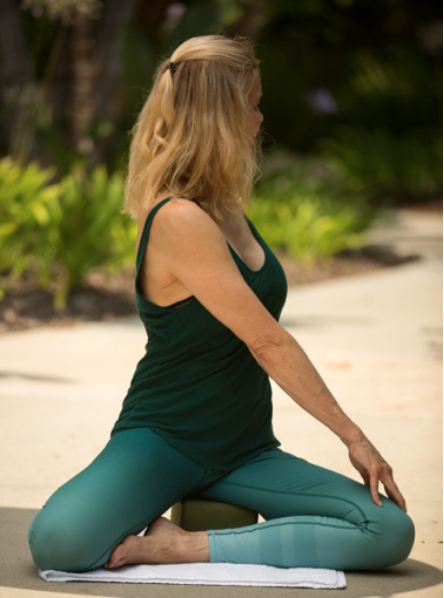
Variation A: Seated on a Block / Front leg in Sukhasana variation / No bind of arms
When you need to focus on gently opening up the back and hips, and elongating the spine, this is the variation for you. Sitting on the block will give space to those with less range in their hips, and will help keep the pelvis in proper alignment. As you twist, take the opposing hand to the thigh of the front leg. The back hand will act as a reminder to lift (hint: do NOT dump your weight onto this hand- this will throw off the alignment of your shoulders and bring unwanted lateral flexion to the spine).
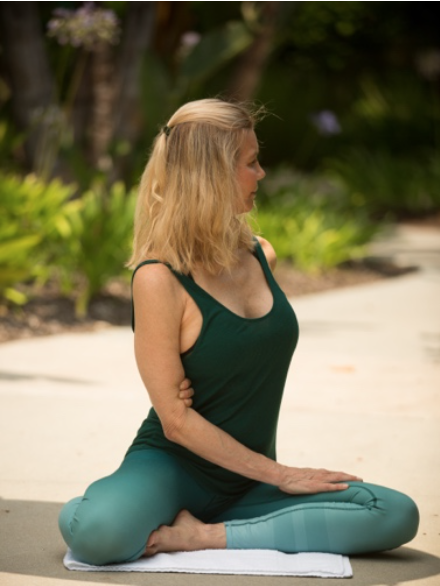
Variation B: Seated on Mat / Front leg in Sukhasana / Bind of back arm to front arm
This variation is for those whose hips and low back feel comfortable seated directly on the mat. (hint: both sit-bones will be evenly weighted, and the pelvis in proper alignment). As you twist, the opposing hand will meet the front thigh, while the back arm will gently internally rotate from the shoulder in order to wrap around the mid-back. The back hand will meet the front arm, just above the elbow crease. (hint: keep your shoulders opening gently away from the heart center, and breathe as evenly as possible into both sides of the lungs).
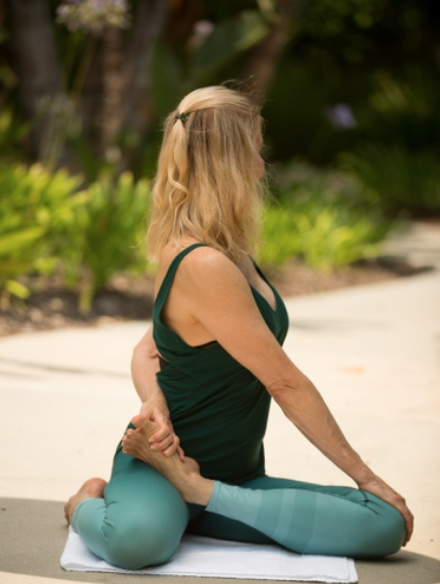
Variation C: Seated on Mat / Front leg in ArdhaPadmasana / Full bind of arms
The final variation of Bharavadjasana is for those with open hips and shoulders; whom need a little more intensity from their seated twist. The front leg is bound in ArdhaPadmasana, offering greater opening to the front hip (hint: as in the previous variation, make sure both sit-bones have even placement on your mat). As you twist, the opposing hand will reach to the front knee, while the back hand will reach for the bound foot. Some find this connection at the big toe, and others can reach around the full foot. (hint: use your inhalations to consciously lengthen, while keeping the pelvis weighted, and the exhalations to gently deepen the twist).
There you have it, yogis.
Get on your mat + Happy Twisting!
With Love + Namaste,
Stacy McCarthy
